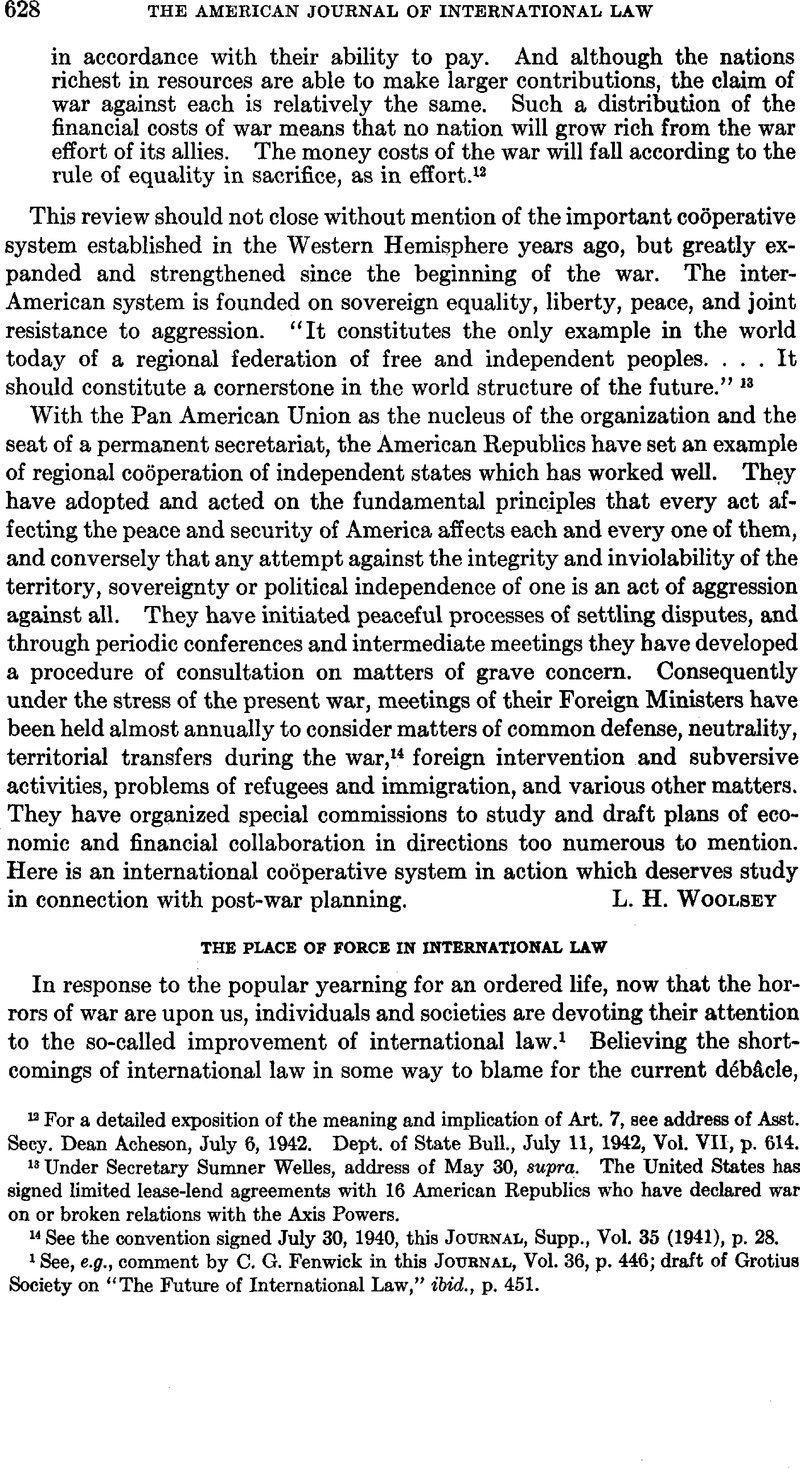No CrossRef data available.
Article contents
The Place of Force in International Law
Published online by Cambridge University Press: 12 April 2017
Abstract

- Type
- Editorial Comment
- Information
- Copyright
- Copyright, © American Society of International Law 1942
References
1 See, e.g., comment by Fenwick, C. G. in this JOURNAL, Vol. 36, p. 446;Google Scholar draft of Grotius Society on “The Future of International Law,” ibid., p. 451 Google Scholar.
2 See, e.g., Fenwick, supra: “The law of force must be repudiated” (p. 446);, “An act of force or violence directed against any member of the international community constitutes an international crime, and it is to be regarded not only as a crime against the yictim of the attack but against the entire community and against each and every member of it” (p.446).
3 “These measures may be military, or economic, or social, according to the nature of the case; but they must be such as will afford adequate protection to the State attacked, and justify it, if it should so decide, in not attempting to defend itself by force. All States are obligated to take part in these measures of coöperative defense, to the extent of the means at their disposal.” Fenwick, supra, p. 446.
4 Ibid., p. 451.




